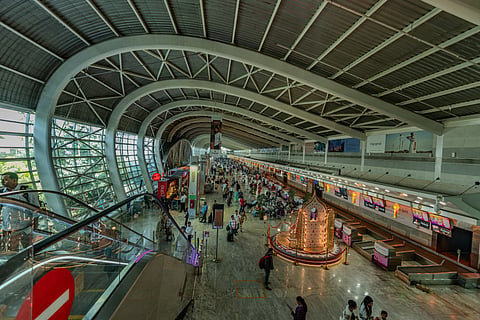
- Destinations
- Experiences
- Stay
- What's new
- Celebrating People
- Responsible Tourism
- CampaignsCampaigns
- Subscribe
- Buy Now

Mumbai’s Terminal 1 (T1) at Chhatrapati Shivaji Maharaj International Airport (CSMIA) will undergo a phased redevelopment later this year. On January 28, Mumbai International Airport Ltd (MIAL) confirmed that T1 will be demolished and redeveloped. This ambitious project aims to increase passenger handling capacity, improving the overall travel experience at the airport.
The redevelopment is set to begin in November 2025. However, to ensure that daily operations are not severely impacted, the construction will be carried out in carefully planned stages, allowing the airport to manage traffic flow more efficiently.
During the renovation period, Terminal 2 (T2), as well as the soon-to-open Navi Mumbai Airport, will take on the additional traffic, effectively absorbing passengers who would typically use T1. Technology like DigiYatra, self-baggage drop counters and e-gates will be employed to keep the passenger flow effortless. A bolstered team of additional service staff will be stationed at key points to ensure the same.
One of the key objectives of the redevelopment is to boost the airport’s capacity. The complete revamp of T1 is set to be complete by 2028-29, after which the terminal will be able to accommodate a staggering 20 million passengers annually, marking a boost of 42 per cent from current capacity. Expect a sprawling built-up area of over two million square feet, a biophilic design that brings nature indoors, open spaces and natural light, and wave-inspired architecture echoing Mumbai’s coastal spirit. The upgrade will also include district cooling systems, advanced electrical substations and a revolutionised baggage handling system, all designed to elevate operational efficiency for both passengers and airlines.
Once complete, T1 will boast sustainable infrastructure and inventive design. The terminal will cater to domestic operations, while allowing future integration of international services. The renewed terminal will be a Multi-Modal Transit Hub (MMTH), seamlessly linking air, rail and road networks with direct metro access and underground bus stations for better connectivity.
(With inputs from multiple news agencies)
